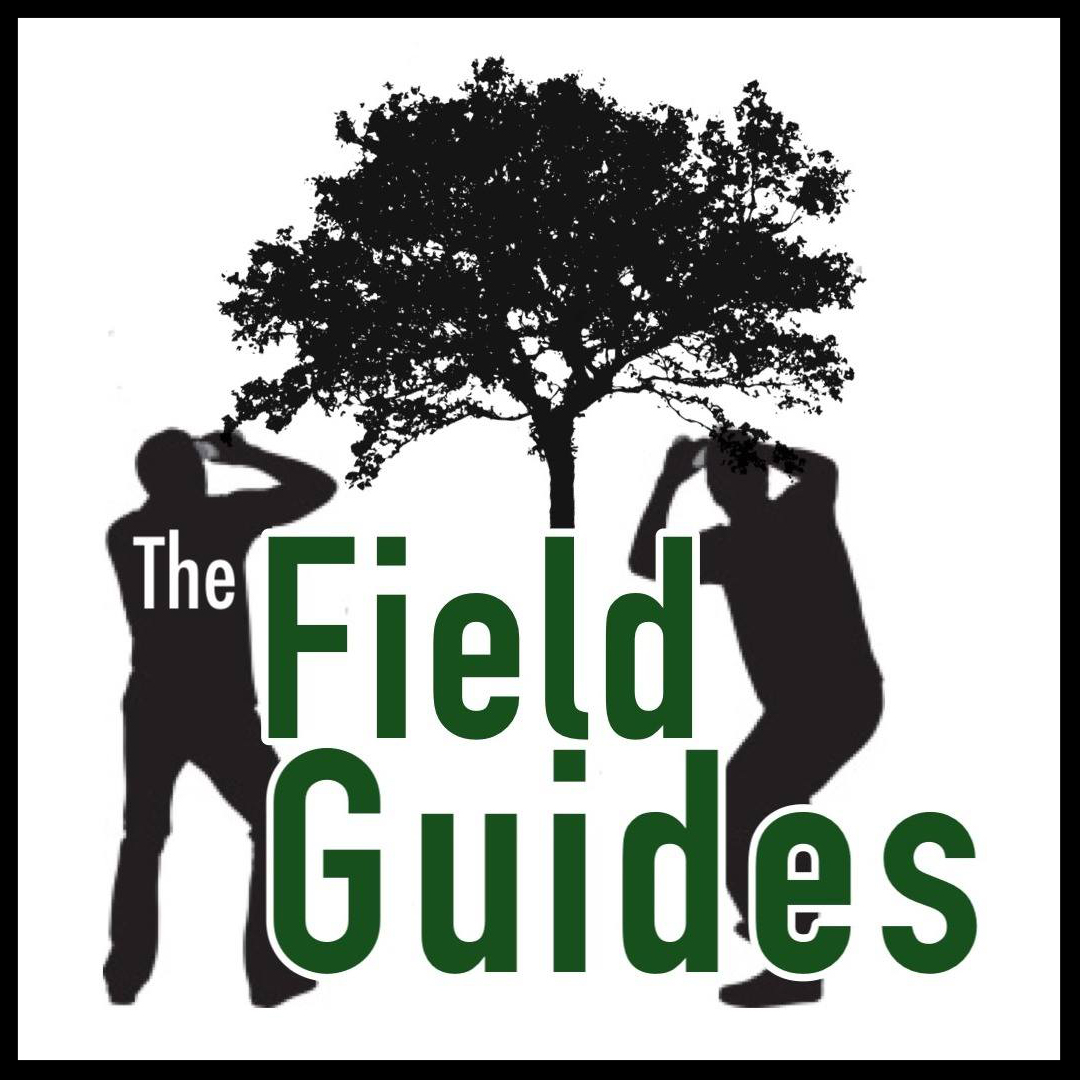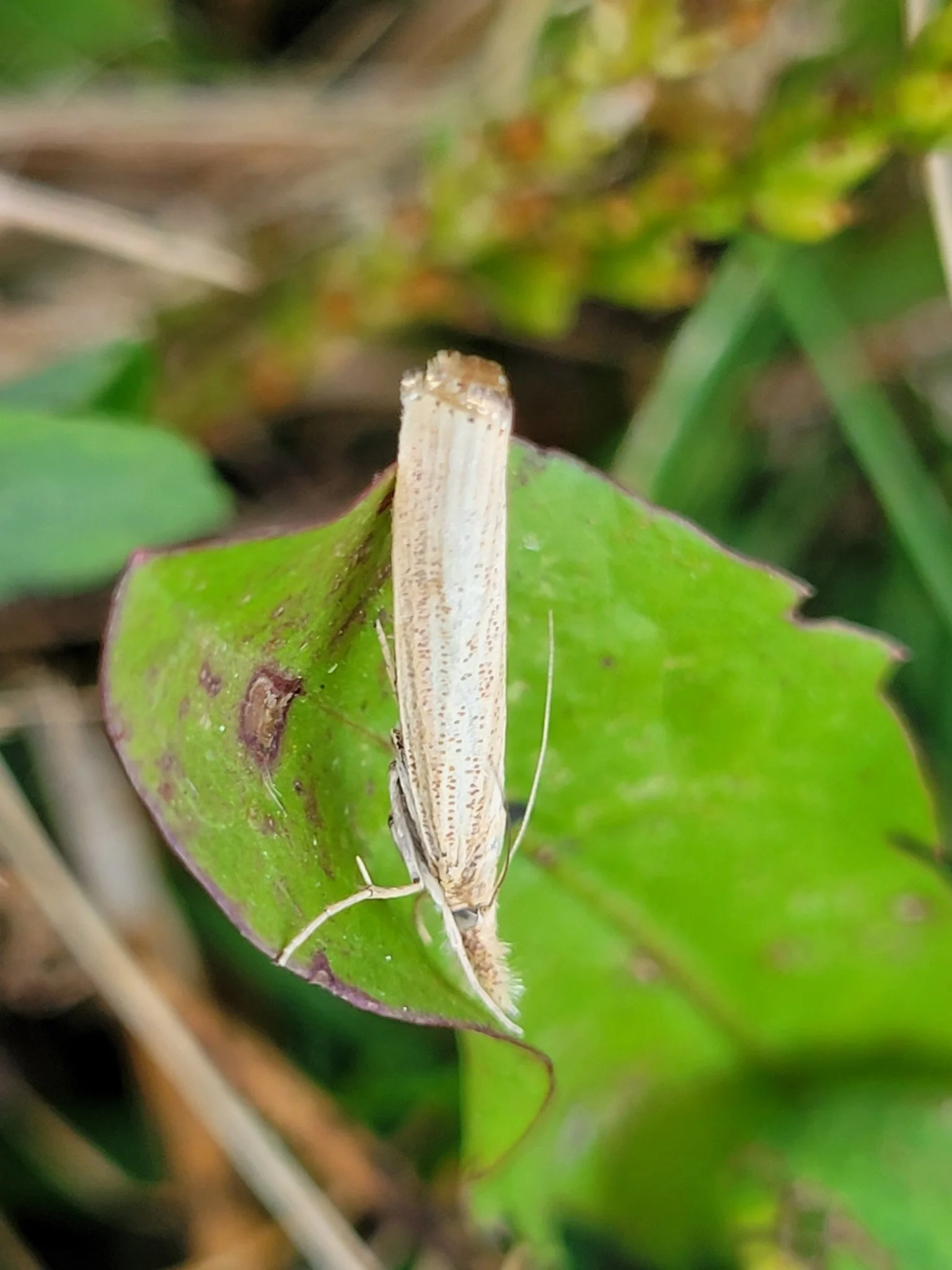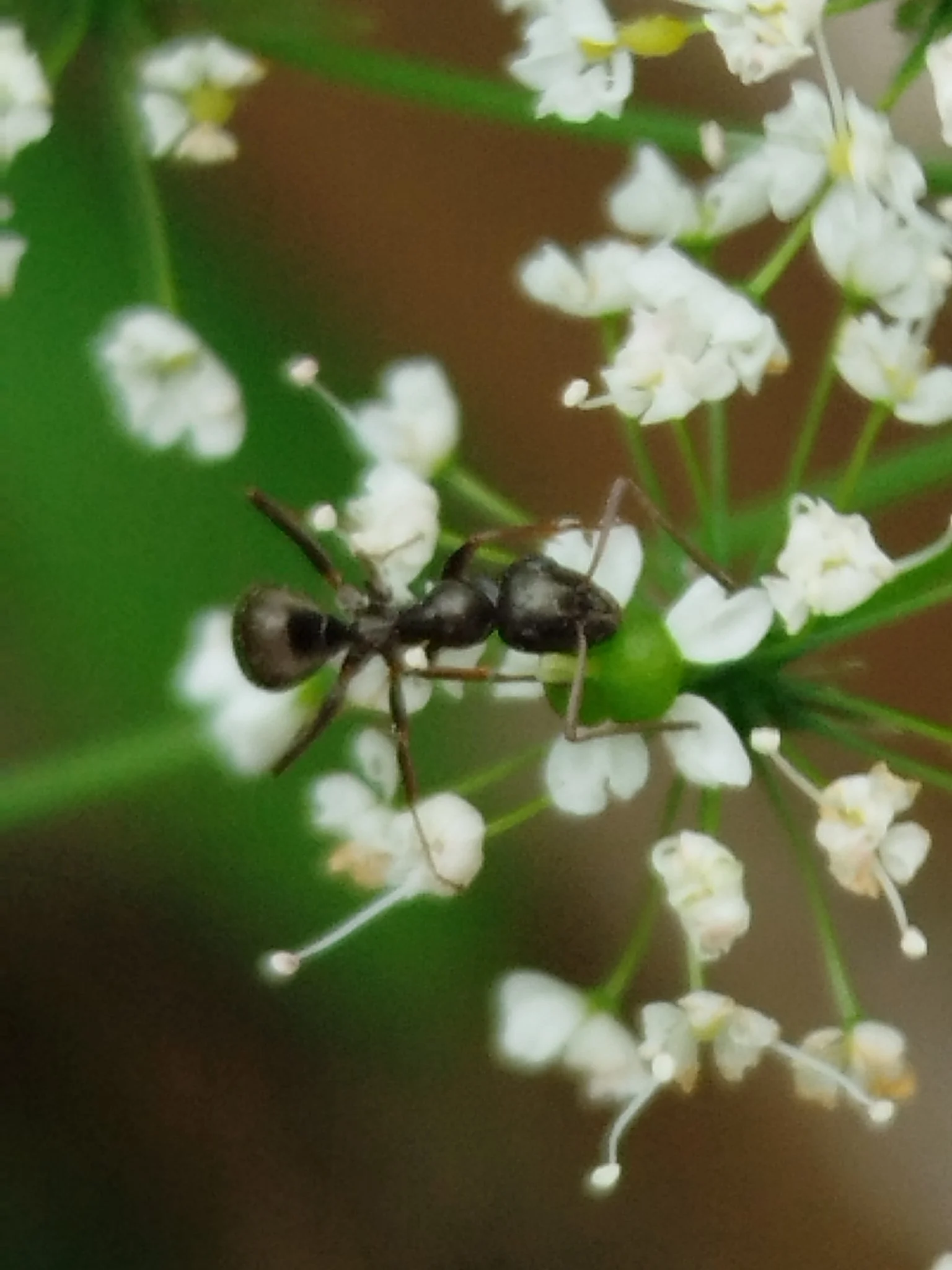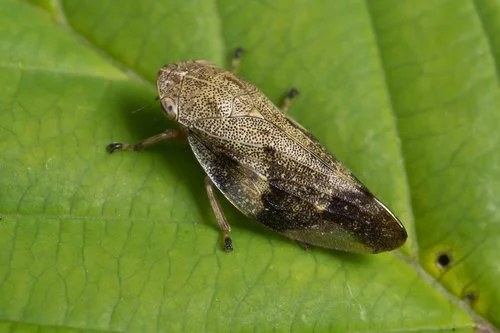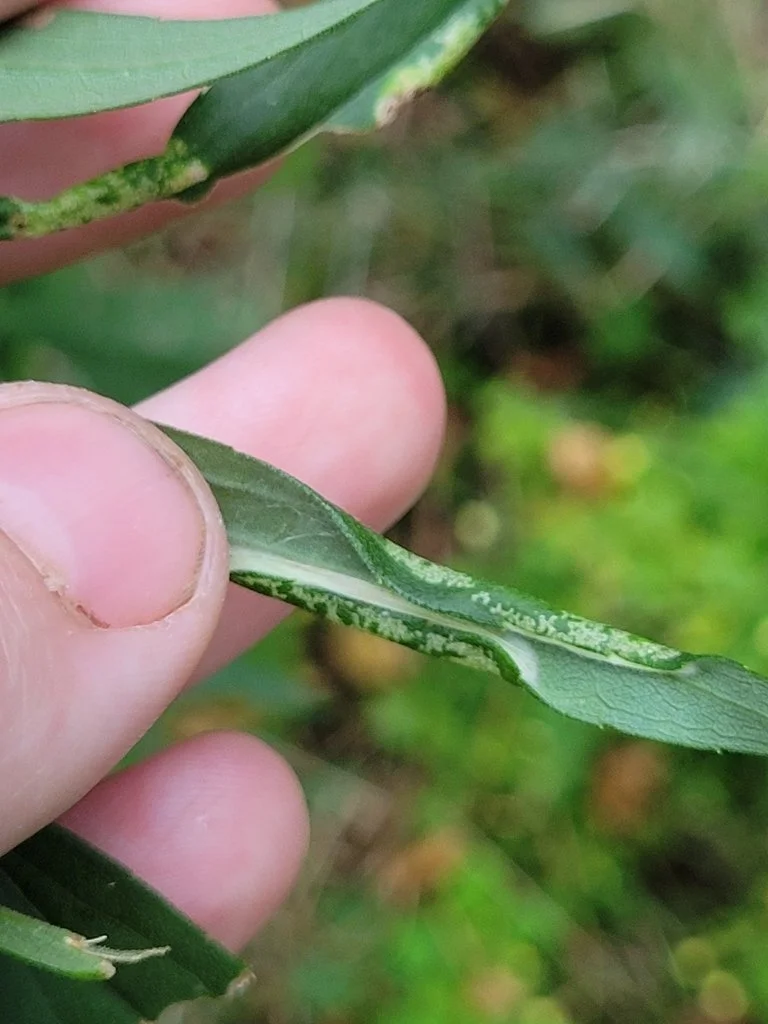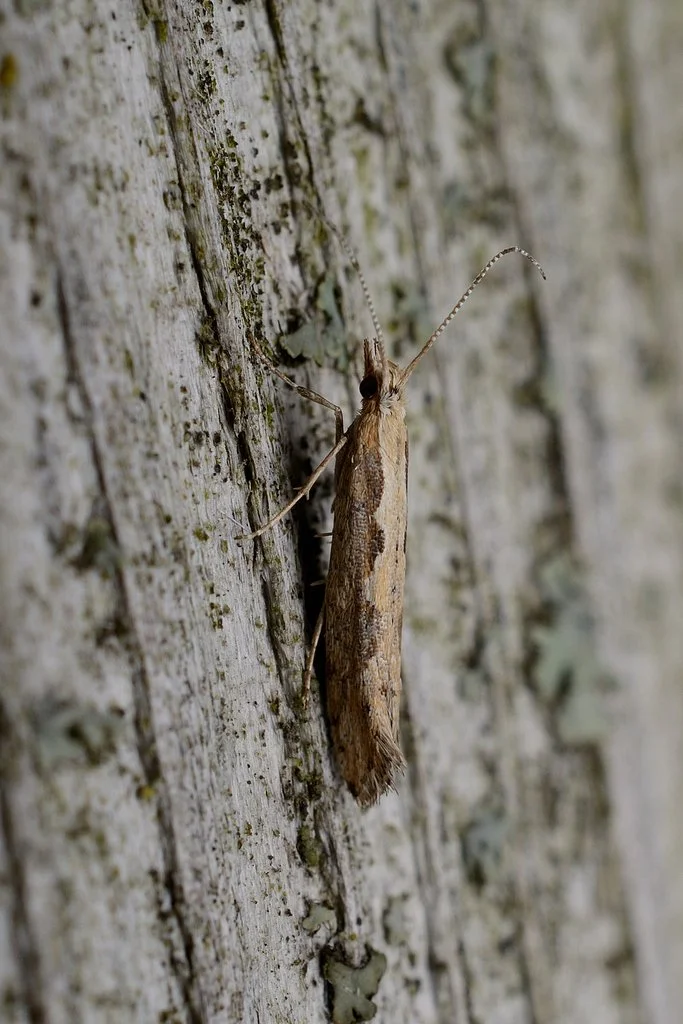The guys are back in the field with our good friend Dr. Jason Dombroskie from the Cornell University Insect Collection!
Listen in as Jason leads us through fields and forests, trusty butterfly net in hand, filling us in on the so-called “Insect Apocalypse.” Are insect populations really collapsing worldwide? What do the numbers say? How bad is it, and — most importantly — what can we do about it?
In this part, we head out on the trail with Jason. He introduces us to some insects we find along the way and schools us on why insects are so important, and in part two – he delves into the details of the insect apocalypse – what we know and what we don’t know.
And since we feel bad that you can’t see what we got to see – we bring back a little trick we had in our last episodes with Jason – each time we find a critter listen for the sound of a camera shutter. That’s the signal to visit this episode’s page on our website – thefieldguidespodcast.com - we’ll have photos there timestamped so you can see what we’re looking at, along with some extra info. Enjoy…
This episode was recorded on August 21, 2025 at Rattlesnake Hill Wildlife Management Area in Dalton, NY..
Episode Notes
Steve said he heard that there are more species of just weevils than there are of fish. Is that true? At one point in the episode Steve mentioned he’d heard there are more species of weevils than there are of fish. I looked it up, and he’s right! Scientists have described around 60–70,000 weevil species, with the real total likely over 100,000, while all the fish in the world come in at about 35,000 species. So as surprising as it sounds, Steve’s claim checks out—the humble weevil family really does outnumber all the fish.
It was also mentioned that some insects are only known from a single specimen in a collection and have never been seen again in the wild. We looked for a study and found a large one from 2018 that looked at more than 800,000 insect species – it found that about one in five—around 19%—are described from a single specimen and never collected again (Lim et al., Current Biology, 2018). It really shows how much of insect diversity is still barely known.
Pollard Walk - During the episode Bill asked about something called a Pollard Walk. That’s actually a standard insect survey method. The idea is simple: you walk a fixed route—usually the same path each time—at a steady pace and record every insect you see within a certain distance, often about 2.5 meters on each side. It’s kind of like a birding “point count,” but moving. The method, named after Eric Pollard who developed it in the 1970s for butterfly monitoring, is still one of the most widely used ways scientists track insect populations over time.
Bat Lake Trail Guide Picture: Jason mentioned the picture from Algonquin Provincial Park’s Trail Guide to their Bat Lake Trail. The picture showed animals with a size that corresponded to their biomass in the ecosystem.
Episode Links
The Cornell University Insect Collection
Also, check out their great Instagram feed
And their annual October event Insectapalooza
Find out more about the recently discovered species of Swallowtail, Papilio solstitius, commonly known as the Midsummer Tiger Swallowtail- https://www.sci.news/biology/papilio-solstitius-13710.html
Sponsors and Ways to Support Us
Thank you to Always Wandering Art (Website and Etsy Shop) for providing the artwork for many of our episodes.
Support us on Patreon.
Photos by timestamp
10:56 – A type of Snout Moth – the Vagabond Crambus (Agriphila vulgivagellus)
30:51 The round, circular galls found on the leaves of goldenrod plants, caused by the Ambrosia Gall Midge, Asteromyia carbonifera, and a symbiotic fungus. This relationship is unique among gall-making insects because the gall's formation is directed by the fungus, not the midge larva itself.
32:37 The Divided Olethreutes moth (Olethreutes bipartitana) is a small leaf-roller moth within the family Tortricidae and genus Olethreutes. This tiny moth, typically measuring 6-10 mm in length, features black, white, and gray colors with two white bands on its rolled wings and is known for its "bird poop mimicry" to avoid predators.
48:05 Formica ants tending treehoppers is a mutualistic relationship where the ants protect the treehoppers and their eggs from predators like jumping spiders in exchange for the treehoppers' sugary, nutrient-rich honeydew. This classic symbiosis involves the ants "milking" the treehoppers, moving them around, and aggressively defending their "herd". In return for the ants' protection and care, the treehoppers' survival rate increases significantly, leading to a beneficial outcome for both species.
49:15 Spittlebugs - The superfamily Cercopoidea, some members of which are called froghoppers and still others known as spittlebugs, are a group of hemipteran insects in the suborder Auchenorrhyncha. Wikipedia
Attribution© Nikolai Vladimirov / some rights reserved / https://www.inaturalist.org/photos/12164443
50:23 The leaf miner that commonly feeds on goldenrod plants is Cremastobombycia solidaginis, a moth in the Gracillariidae family, also known as the Goldenrod Leaf Miner moth. This species creates distinctive mines or tunnels within the leaves of various goldenrod plants as it grows.
50:58 Casebearer moths are Lepidoptera larvae known for creating portable silk cases for protection and camouflage, with some species like the household casebearer feeding on hair and fibers indoors, while others attack foliage. The larvae of the household casebearer (Phereoeca uterella), also called a plaster bagworm, form flat, oval cases from silk, sand, and debris, feeding on things like hair and spider webs. Other casebearers, in the family Coleophoridae, feed on leaves, twigs, and fruits and often overwinter in their cases.
55:01 The Diamondback Moth (Plutella xylostella) is a globally distributed pest known for the immense damage its larvae cause to cruciferous crops like cabbage, broccoli, and kale. Its name comes from the diamond-shaped markings on the adult moth's back.
Works Cited
Biesmeijer, J.C., Roberts, S.P., Reemer, M., Ohlemuller, R., Edwards, M., Peeters, T., Schaffers, A.P., Potts, S.G., Kleukers, R.J.M.C., Thomas, C.D. and Settele, J., 2006. Parallel declines in pollinators and insect-pollinated plants in Britain and the Netherlands. Science, 313(5785), pp.351-354.
Boyle, M.J., Bonebrake, T.C., Dias da Silva, K., Dongmo, M.A., Machado França, F., Gregory, N., Kitching, R.L., Ledger, M.J., Lewis, O.T., Sharp, A.C. and Stork, N.E., 2025. Causes and consequences of insect decline in tropical forests. Nature Reviews Biodiversity, pp.1-17.
Burghardt, K.T., Tallamy, D.W., Philips, C. and Shropshire, K.J., 2010. Non‐native plants reduce abundance, richness, and host specialization in lepidopteran communities. Ecosphere, 1(5), pp.1-22.
Colla, S.R. and Packer, L., 2008. Evidence for decline in eastern North American bumblebees (Hymenoptera: Apidae), with special focus on Bombus affinis Cresson. Biodiversity and Conservation, 17(6), pp.1379-1391.
Crossley, M.S., Meier, A.R., Baldwin, E.M., Berry, L.L., Crenshaw, L.C., Hartman, G.L., Lagos-Kutz, D., Nichols, D.H., Patel, K., Varriano, S. and Snyder, W.E., 2020. No net insect abundance and diversity declines across US Long Term Ecological Research sites. Nature Ecology & Evolution, 4(10), pp.1368-1376.
DeWalt, R.E., Favret, C. and Webb, D.W., 2005. Just how imperiled are aquatic insects? A case study of stoneflies (Plecoptera) in Illinois. Annals of the Entomological Society of America, 98(6), pp.941-950.
Edwards, C.B., Zipkin, E.F., Henry, E.H., Haddad, N.M., Forister, M.L., Burls, K.J., Campbell, S.P., Crone, E.E., Diffendorfer, J., Douglas, M.R. and Drum, R.G., 2025. Rapid butterfly declines across the United States during the 21st century. Science, 387(6738), pp.1090-1094.
Gaona, F.P., Iñiguez-Armijos, C., Brehm, G., Fiedler, K. and Espinosa, C.I., 2021. Drastic loss of insects (Lepidoptera: Geometridae) in urban landscapes in a tropical biodiversity hotspot. Journal of Insect Conservation, 25(3), pp.395-405.
Gardiner, M.M., Allee, L.L., Brown, P.M., Losey, J.E., Roy, H.E. and Smyth, R.R., 2012. Lessons from lady beetles: accuracy of monitoring data from US and UK citizen‐science programs. Frontiers in Ecology and the Environment, 10(9), pp.471-476.
Groenendijk, D. and van der Meulen, J., 2004. Conservation of moths in The Netherlands: population trends, distribution patterns and monitoring techniques of day-flying moths. Journal of Insect Conservation, 8(2), pp.109-118.
Haddad, N.M., Haarstad, J. and Tilman, D., 2000. The effects of long-term nitrogen loading on grassland insect communities. Oecologia, 124(1), pp.73-84.
Hallmann, C.A., Sorg, M., Jongejans, E., Siepel, H., Hofland, N., Schwan, H., Stenmans, W., Müller, A., Sumser, H., Hörren, T. and Goulson, D., 2017. More than 75 percent decline over 27 years in total flying insect biomass in protected areas. PLoS ONE12 (10): e0185809
Hallmann, C.A., Ssymank, A., Sorg, M., de Kroon, H. and Jongejans, E., 2021. Insect biomass decline scaled to species diversity: General patterns derived from a hoverfly community. Proceedings of the National Academy of Sciences, 118(2), p.e2002554117.
Harris, J.E., Rodenhouse, N.L. and Holmes, R.T., 2019. Decline in beetle abundance and diversity in an intact temperate forest linked to climate warming. Biological Conservation, 240, p.108219.
Hembry, D.H., 2013. Herbarium Specimens Reveal Putative Insect Extinction on the Deforested Island of Mangareva (Gambier Archipelago, French Polynesia). Pacific Science, 67(4), pp.553-560.
Høye, T.T., Loboda, S., Koltz, A.M., Gillespie, M.A., Bowden, J.J. and Schmidt, N.M., 2021. Nonlinear trends in abundance and diversity and complex responses to climate change in Arctic arthropods. Proceedings of the National Academy of Sciences, 118(2), p.e2002557117.
Huryn, A.D. and Wallace, J.B., 2000. Life history and production of stream insects. Annual review of entomology, 45(1), pp.83-110.
Kawahara, A.Y., Reeves, L.E., Barber, J.R. and Black, S.H., 2021. Eight simple actions that individuals can take to save insects from global declines. Proceedings of the National Academy of Sciences, 118(2), p.e2002547117.
Leuenberger, W., Doser, J.W., Belitz, M.W., Ries, L., Haddad, N.M., Thogmartin, W.E. and Zipkin, E.F., 2025. Three decades of declines restructure butterfly communities in the Midwestern United States. Proceedings of the National Academy of Sciences, 122(33), p.e2501340122.
Liang, M., Yang, Q., Chase, J.M., Isbell, F., Loreau, M., Schmid, B., Seabloom, E.W., Tilman, D. and Wang, S., 2025. Unifying spatial scaling laws of biodiversity and ecosystem stability. Science, 387(6740), p.eadl2373.
Lister, B.C. and Garcia, A., 2018. Climate-driven declines in arthropod abundance restructure a rainforest food web. Proceedings of the National Academy of Sciences, 115(44), pp.E10397-E10406.
Owens, A.C., Pocock, M.J. and Seymoure, B.M., 2024. Current evidence in support of insect-friendly lighting practices. Current Opinion in Insect Science, 66, p.101276.
Myers, L.W., Kondratieff, B.C., Grubbs, S.A., Pett, L.A., DeWalt, R.E., Mihuc, T.B. and Hart, L.V., 2025. Distributional and species richness patterns of the stoneflies (Insecta, Plecoptera) in New York State. Biodiversity Data Journal, 13, p.e158952.
Pilotto, F., Kühn, I., Adrian, R., Alber, R., Alignier, A., Andrews, C., Bäck, J., Barbaro, L., Beaumont, D., Beenaerts, N. and Benham, S., 2020. Meta-analysis of multidecadal biodiversity trends in Europe. Nature communications, 11(1), p.3486.
Pinkert, S., Farwig, N., Kawahara, A.Y. and Jetz, W., 2025. Global hotspots of butterfly diversity are threatened in a warming world. Nature Ecology & Evolution, pp.1-12.
Raven, P.H. and Wagner, D.L., 2021. Agricultural intensification and climate change are rapidly decreasing insect biodiversity. Proceedings of the National Academy of Sciences, 118(2), p.e2002548117.
Rodrigues, A.V., Rissanen, T., Jones, M.M., Huikkonen, I.M., Huitu, O., Korpimäki, E., Kuussaari, M., Lehikoinen, A., Lindén, A., Pietiäinen, H. and Pöyry, J., 2025. Cross‐Taxa Analysis of Long‐Term Data Reveals a Positive Biodiversity‐Stability Relationship With Taxon‐Specific Mechanistic Underpinning. Ecology Letters, 28(4), p.e70003.
Salcido, D.M., Forister, M.L., Garcia Lopez, H. and Dyer, L.A., 2020. Loss of dominant caterpillar genera in a protected tropical forest. Scientific reports, 10(1), p.422.
Sánchez-Bayo, F. and Wyckhuys, K.A., 2019. Worldwide decline of the entomofauna: A review of its drivers. Biological conservation, 232, pp.8-27.
Schowalter, T.D., Pandey, M., Presley, S.J., Willig, M.R. and Zimmerman, J.K., 2021. Arthropods are not declining but are responsive to disturbance in the Luquillo Experimental Forest, Puerto Rico. Proceedings of the National Academy of Sciences, 118(2), p.e2002556117.
Sedlmeier, J.E., Grass, I., Bendalam, P., Höglinger, B., Walker, F., Gerhard, D., Piepho, H.P., Brühl, C.A. and Petschenka, G., 2025. Neonicotinoid insecticides can pose a severe threat to grassland plant bug communities. Communications Earth & Environment, 6(1), p.162.
Shortall, C.R., Moore, A., Smith, E., Hall, M.J., Woiwod, I.P. and Harrington, R., 2009. Long‐term changes in the abundance of flying insects. Insect Conservation and Diversity, 2(4), pp.251-260.
Soga, M. and Gaston, K.J., 2018. Shifting baseline syndrome: causes, consequences, and implications. Frontiers in Ecology and the Environment, 16(4), pp.222-230.
Stork, N.E., 2018. How many species of insects and other terrestrial arthropods are there on Earth?. Annual review of entomology, 63(2018), pp.31-45.
Tallamy, D.W., Narango, D.L. and Mitchell, A.B., 2021. Do non‐native plants contribute to insect declines?. Ecological Entomology, 46(4), pp.729-742.
Thomas, J.A., Telfer, M.G., Roy, D.B., Preston, C.D., Greenwood, J.J.D., Asher, J., Fox, R., Clarke, R.T. and Lawton, J.H., 2004. Comparative losses of British butterflies, birds, and plants and the global extinction crisis. Science, 303(5665), pp.1879-1881.
Tierno de Figueroa, J.M., López-Rodríguez, M.J., Lorenz, A., Graf, W., Schmidt-Kloiber, A. and Hering, D., 2010. Vulnerable taxa of European Plecoptera (Insecta) in the context of climate change. Biodiversity and conservation, 19(5), pp.1269-1277.
Turin, H. and Den Boer, P.J., 1988. Changes in the distribution of carabid beetles in The Netherlands since 1880. II. Isolation of habitats and long-term time trends in the occurence of carabid species with different powers of dispersal (Coleoptera, Carabidae). Biological Conservation, 44(3), pp.179-200.
Van Deynze, B., Swinton, S.M., Hennessy, D.A., Haddad, N.M. and Ries, L., 2024. Insecticides, more than herbicides, land use, and climate, are associated with declines in butterfly species richness and abundance in the American Midwest. PLoS One, 19(6), p.e0304319.
Van Klink, R., Bowler, D.E., Gongalsky, K.B., Swengel, A.B., Gentile, A. and Chase, J.M., 2020. Meta-analysis reveals declines in terrestrial but increases in freshwater insect abundances. Science, 368(6489), pp.417-420.
Wagner, D.L., Fox, R., Salcido, D.M. and Dyer, L.A., 2021. A window to the world of global insect declines: Moth biodiversity trends are complex and heterogeneous. Proceedings of the National Academy of Sciences, 118(2), p.e2002549117.
Wagner DL, Grames EM, Forister ML, Berenbaum MR, Stopak D. Insect decline in the Anthropocene: Death by a thousand cuts. Proceedings of the National Academy of Sciences. 2021 Jan 12;118(2):e2023989118.
WallisDeVries, M.F. and van Swaay, C.A., 2017. A nitrogen index to track changes in butterfly species assemblages under nitrogen deposition. Biological Conservation, 212, pp.448-453.
Warren, M.S., Hill, J.K., Thomas, J.A., Asher, J., Fox, R., Huntley, B., Roy, D.B., Telfer, M.G., Jeffcoate, S., Harding, P. and Jeffcoate, G., 2001. Rapid responses of British butterflies to opposing forces of climate and habitat change. Nature, 414(6859), pp.65-69.
Warren, M.S., Maes, D., van Swaay, C.A., Goffart, P., Van Dyck, H., Bourn, N.A., Wynhoff, I., Hoare, D. and Ellis, S., 2021. The decline of butterflies in Europe: Problems, significance, and possible solutions. Proceedings of the National Academy of Sciences, 118(2), p.e2002551117.
Wilson, E.O., 1987. The little things that run the world (the importance and conservation of invertebrates). Conservation biology, pp.344-346.
Yang, L.H. and Gratton, C., 2014. Insects as drivers of ecosystem processes. Current opinion in insect science, 2, pp.26-32.
